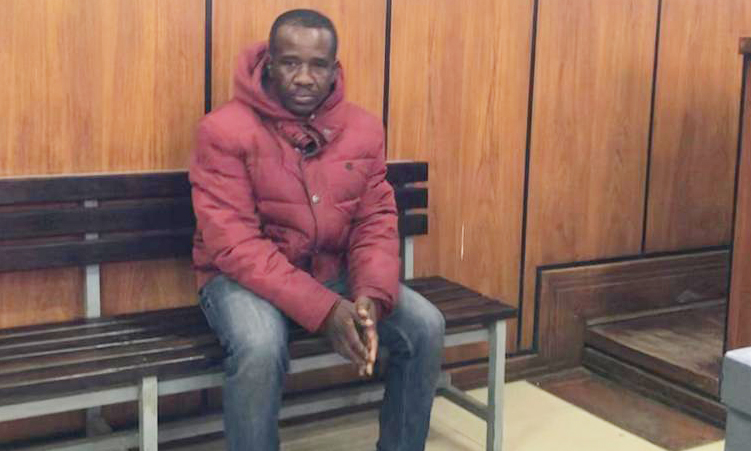THE first of a spate of light aircraft crashes that have happened in Namibia since October last year was probably the result of the use of a wrong mixture of fuel and air as the aircraft took off from Eros Airport in Windhoek, an official investigation into the fatal crash has concluded.
The Directorate of Aircraft Accident Investigations’ report on its investigation of the crash of a Beechcraft Bonanza aeroplane near the Trade Centre east of Eros Airport on October 22 last year was released by the Minister of Works and Transport on Monday. In the report, aircraft accident investigator Ericksson Nengola concludes that the probable cause of the crash was that, after the aircraft’s engine lost power as it took off from Eros Airport, the pilot probably tried to carry out an emergency landing by turning the plane to the left.This however caused the plane to stall and plummet to the ground.Identified as a factor that contributed to the crash was a finding that during lift-off, the aircraft’s engine suffered from poor performance “from fuel starvation due to incorrect fuel air ratio mixture setting”.The investigator further concluded that there was a strong possibility that as the aircraft was preparing to take off, its engine revolutions may have risen above the recommended level and that this prompted the pilot to mistakenly adjust the plane’s mixture control lever to a lean fuel-air mixture.Both occupants of the aircraft – pilot Giacomo Savoldelli (39) and an Italian passenger, Alessandro Paci (60), who was on a hunting trip to Namibia – were killed in the crash.They had taken off from Eros Airport on their way to Savoldelli’s Okarumuti Game Lodge about 70 kilometres northeast of Windhoek.As it took off from the airport, the aircraft was seen to be gaining altitude, before it lost some height, again gained altitude, and then turned to the left.Shortly after that, the sole air traffic controller on duty at the airport heard part of a radio distress call, and then saw the plane diving to the ground, it is recounted in the report.One eyewitness who saw the plane turning to the east reported that he heard no engine noise, which made him realise that the engine was not producing power.Another eyewitness reported that shortly after the aircraft became airborne, he heard two very loud backfire sounds.After the last of those bangs, it was silent and the witness did not hear the engine running.”The plane stalled and went straight to the ground,” reported Nengola, who is also the Director of Aircraft Accident Investigations in the Ministry of Works and Transport.”(T)his accident was not survivable,” Nengola stated.During the investigation, no evidence was found of mechanical failure, fuel contamination, bad weather or any medical condition that could have caused the crash, the report indicates.Another pilot who had flown the aircraft from Eros to Mariental and Swakopmund the day before the accident reported that the plane performed normally during that flight, it is also recorded in the report.Savoldelli had been licensed to fly this model Beechcraft since September 2000 and had notched up a total of about 184 hours piloting this type of aeroplane, according to the report.The last time he had flown the plane before the crash was on August 25 last year.”The engine backfiring heard by eyewitnesses was most probably the beginning of the engine failure while the loud bang heard could be the sound made by engine sudden stoppage,” it is stated in the report.The report states that fuel starvation, due to an incorrect fuel-air mixture, led to poor engine performance during lift-off.When the pilot then possibly opted to carry out an emergency landing somewhere in front of Trade Centre, he most probably saw a high-tension electricity line in his approach path and tried to fly over the power line.”At this stage, the aircraft was close to the ground with low speed and a lot of drag.As a result the aircraft stalled and dropped out of the sky,” the report states.The report on the Beechcraft crash is the first to be released on a spate of serious light aircraft accidents that have been happening in Namibia since October last year.Accident reports are still being awaited on the deadly crash of a Cessna 210 in Windhoek’s Olympia area, with the loss of six lives, on January 11, and two non-fatal crash landings of Cessna 210 aircraft in Windhoek on May 9 and at Swakopmund on June 14, after those planes had apparently experienced engine problems.In the report, aircraft accident investigator Ericksson Nengola concludes that the probable cause of the crash was that, after the aircraft’s engine lost power as it took off from Eros Airport, the pilot probably tried to carry out an emergency landing by turning the plane to the left.This however caused the plane to stall and plummet to the ground.Identified as a factor that contributed to the crash was a finding that during lift-off, the aircraft’s engine suffered from poor performance “from fuel starvation due to incorrect fuel air ratio mixture setting”.The investigator further concluded that there was a strong possibility that as the aircraft was preparing to take off, its engine revolutions may have risen above the recommended level and that this prompted the pilot to mistakenly adjust the plane’s mixture control lever to a lean fuel-air mixture.Both occupants of the aircraft – pilot Giacomo Savoldelli (39) and an Italian passenger, Alessandro Paci (60), who was on a hunting trip to Namibia – were killed in the crash.They had taken off from Eros Airport on their way to Savoldelli’s Okarumuti Game Lodge about 70 kilometres northeast of Windhoek.As it took off from the airport, the aircraft was seen to be gaining altitude, before it lost some height, again gained altitude, and then turned to the left.Shortly after that, the sole air traffic controller on duty at the airport heard part of a radio distress call, and then saw the plane diving to the ground, it is recounted in the report.One eyewitness who saw the plane turning to the east reported that he heard no engine noise, which made him realise that the engine was not producing power.Another eyewitness reported that shortly after the aircraft became airborne, he heard two very loud backfire sounds.After the last of those bangs, it was silent and the witness did not hear the engine running.”The plane stalled and went straight to the ground,” reported Nengola, who is also the Director of Aircraft Accident Investigations in the Ministry of Works and Transport.”(T)his accident was not survivable,” Nengola stated.During the investigation, no evidence was found of mechanical failure, fuel contamination, bad weather or any medical condition that could have caused the crash, the report indicates.Another pilot who had flown the aircraft from Eros to Mariental and Swakopmund the day before the accident reported that the plane performed normally during that flight, it is also recorded in the report.Savoldelli had been licensed to fly this model Beechcraft since September 2000 and had notched up a total of about 184 hours piloting this type of aeroplane, according to the report.The last time he had flown the plane before the crash was on August 25 last year.”The engine backfiring heard by eyewitnesses was most probably the beginning of the engine failure while the loud bang heard could be the sound made by engine sudden stoppage,” it is stated in the report.The report states that fuel starvation, due to an incorrect fuel-air mixture, led to poor engine performance during lift-off.When the pilot then possibly opted to carry out an emergency landing somewhere in front of Trade Centre, he most probably saw a high-tension electricity line in his approach path and tried to fly over the power line.”At this stage, the aircraft was close to the ground with low speed and a lot of drag.As a result the aircraft stalled and dropped out of the sky,” the report states.The report on the Beechcraft crash is the first to be released on a spate of serious light aircraft accidents that have been happening in Namibia since October last year.Accident reports are still being awaited on the deadly crash of a Cessna 210 in Windhoek’s Olympia area, with the loss of six lives, on January 11, and two non-fatal crash landings of Cessna 210 aircraft in Windhoek on May 9 and at Swakopmund on June 14, after those planes had apparently experienced engine problems.
Stay informed with The Namibian – your source for credible journalism. Get in-depth reporting and opinions for
only N$85 a month. Invest in journalism, invest in democracy –
Subscribe Now!









